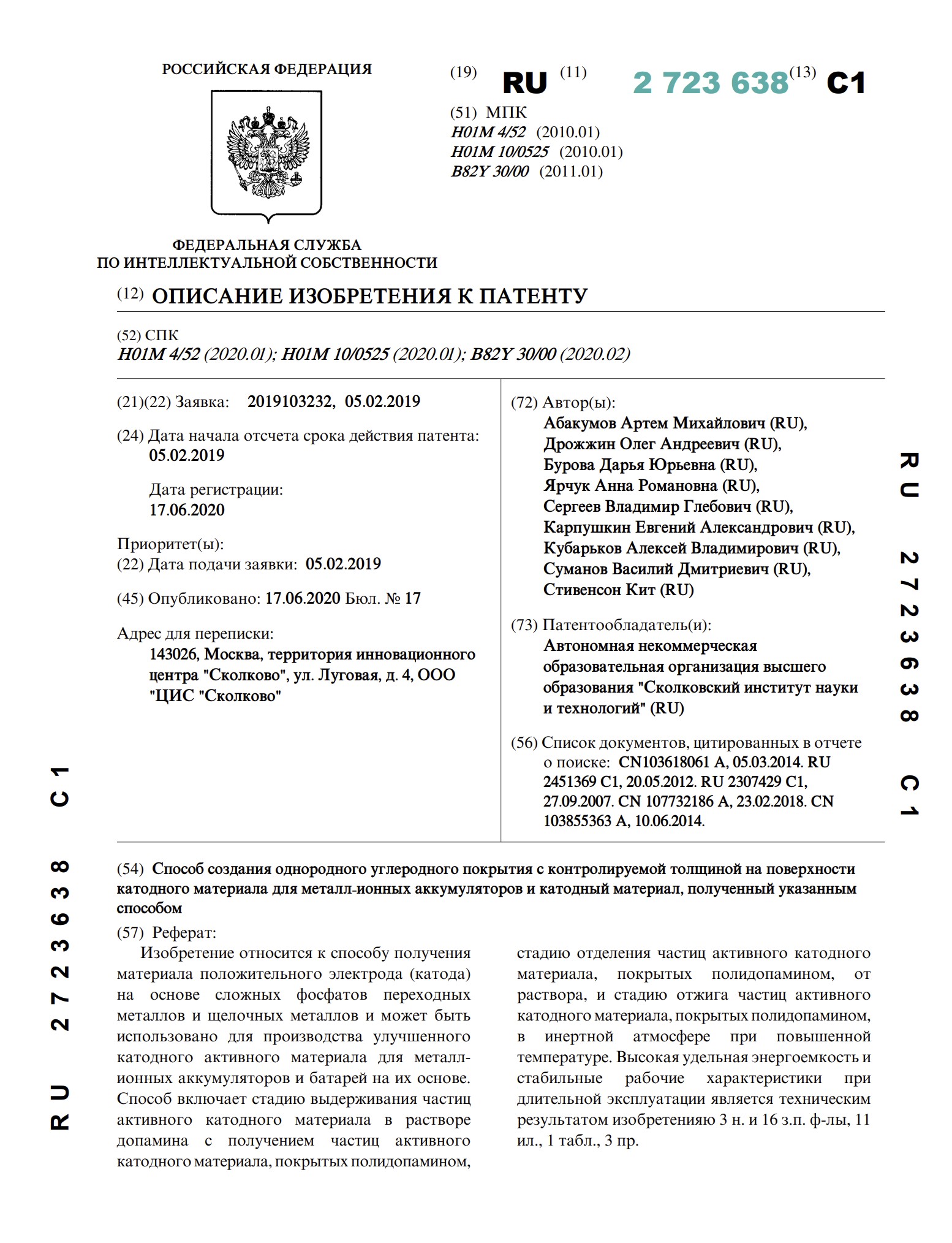Researchers from the Skoltech Center for Energy Science and Technology (CEST) have patented a new method for creating a uniform carbon coating with controllable thickness to enhance the electrochemical performance of cathode materials in metal-ion batteries.
The patent describes a method for creating a carbon coating on active materials of lithium-ion and sodium-ion batteries (LIB and SIB, respectively).
The majority of modern LIBs use oxides with a layered structure as the cathode material. LIBs exhibit high energy density but are not safe enough and too slow to charge/discharge. Some LIBs use polyanionic materials, of which only one, lithium iron phosphate − LiFePO4 − is used in commercial production. LiFePO4 is much safer than oxides thanks to phosphate anions firmly binding oxygen atoms in a charged state and, therefore, preventing the release of oxygen and occurrence of exothermic reactions even at high temperatures. Moreover, lithium iron phosphate has a longer service life than oxide cathodes and can charge/discharge in a matter of minutes. Yet, lithium iron phosphate, similarly to many other polyanionic materials currently at the development stage, has a major drawback − low electronic conductivity – which, in theory, should be dealt with by applying a conductive carbon coating to help electrons to reach each of the particles. In practice however, much depends on how uniform and thin the synthesized coating is.
“Our patent describes a new method for producing a quality carbon coating from the polydopamine polymer. The thickness of such coating is easy to control by varying the time the phosphates are kept in the dopamine solution which is then polymerized and annealed together with the material in an inert atmosphere to form a thin and uniform carbon layer. This method not only may enhance the quality of the industrial LiFePO4 but also bring into practice other higher-capacity LIB and/or SIB materials,” says Oleg Drozhzhin, a senior research scientist at CEST.
“We are already using the patented technology to apply the carbon coating on the promising SIB cathode material, Na3V2(PO4)2O2F, which we produce by microwave-assisted hydrothermal synthesis. Recently, working within Skoltech’s Translational Research and Innovation Program (STRIP), we have scaled up the synthesis to several kilograms in order to create the first prototypes of SIB cells with a capacity of 1 to 5 Ah,” comments professor Artem Abakumov, CEST director.
***
Dear partners, if you are interested in any of Skoltech’s technologies, our Knowledge Transfer Office will be glad to consult you on licensing and technology transfer opportunities for your business. Here is Skoltech’s Portfolio of intellectual property (Rus). For further details, please feel free to contact the .
Contact information:
Skoltech Communications
+7 (495) 280 14 81

